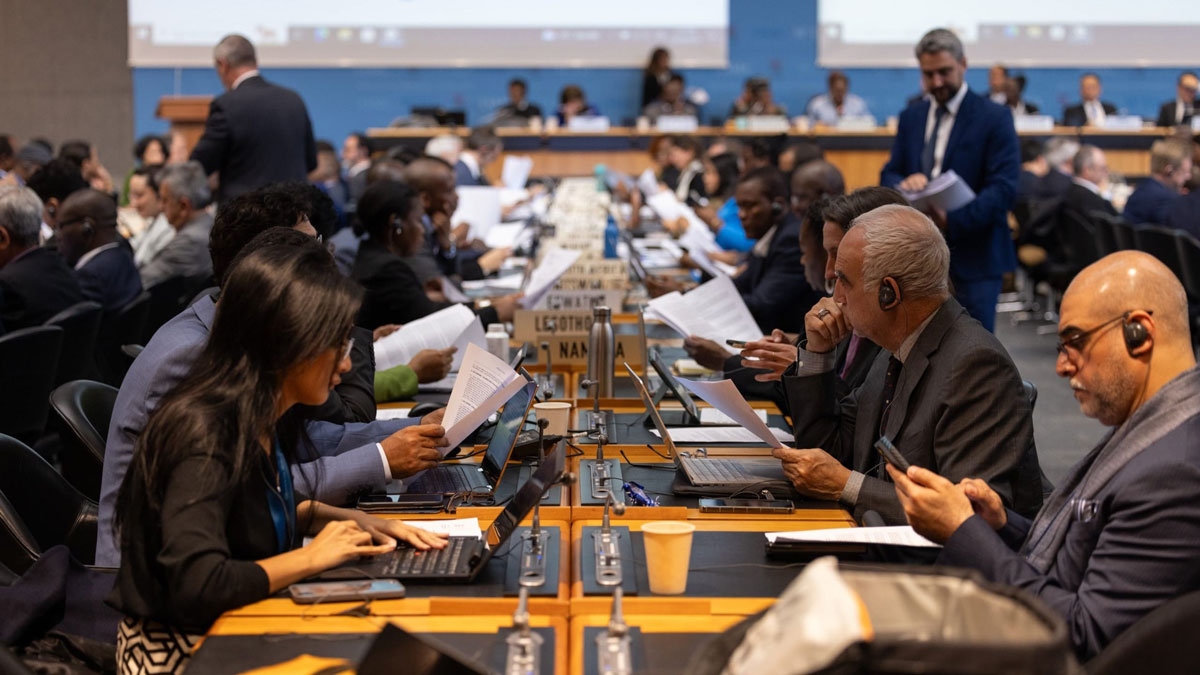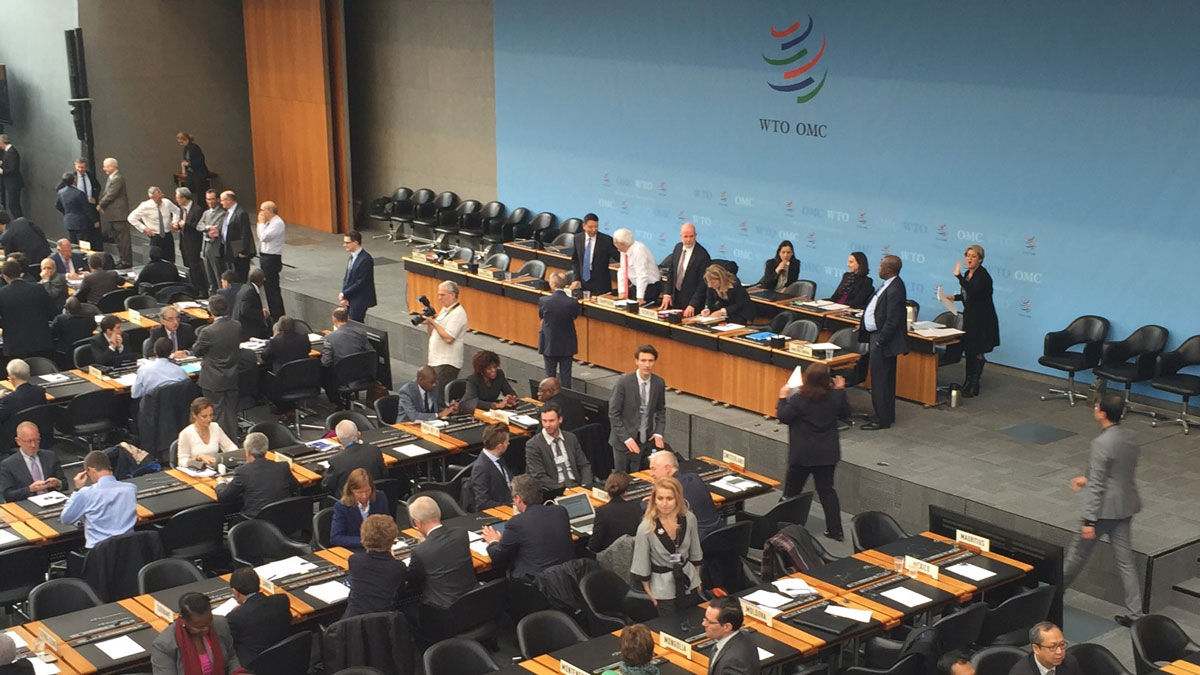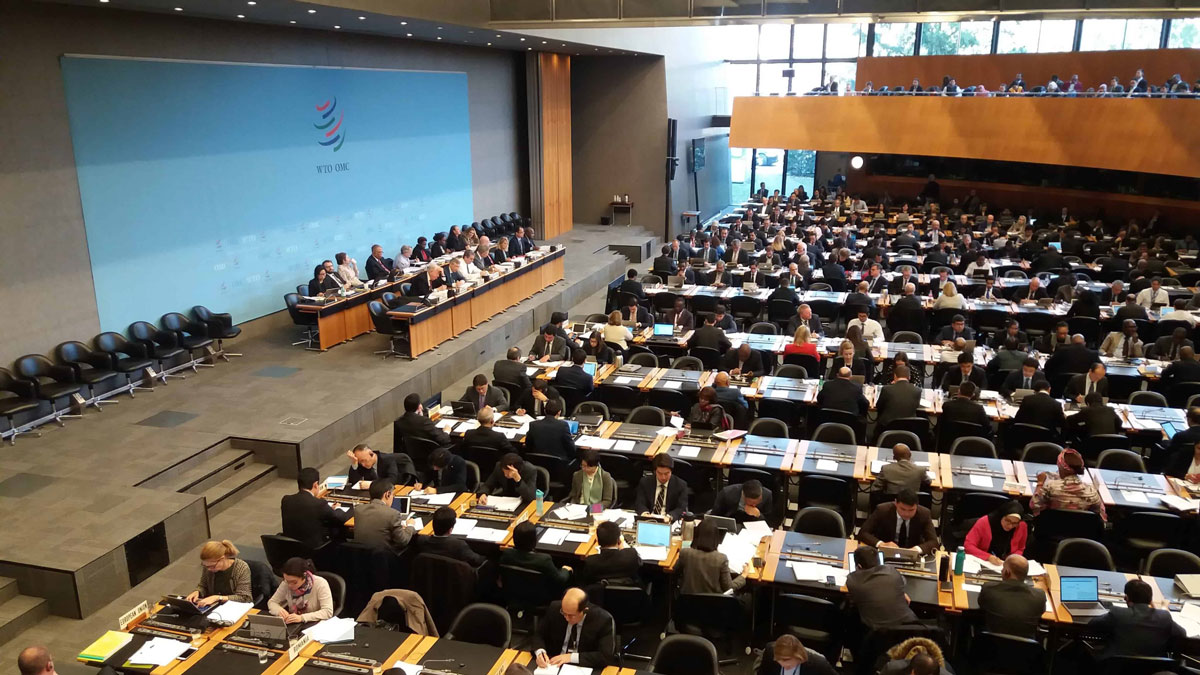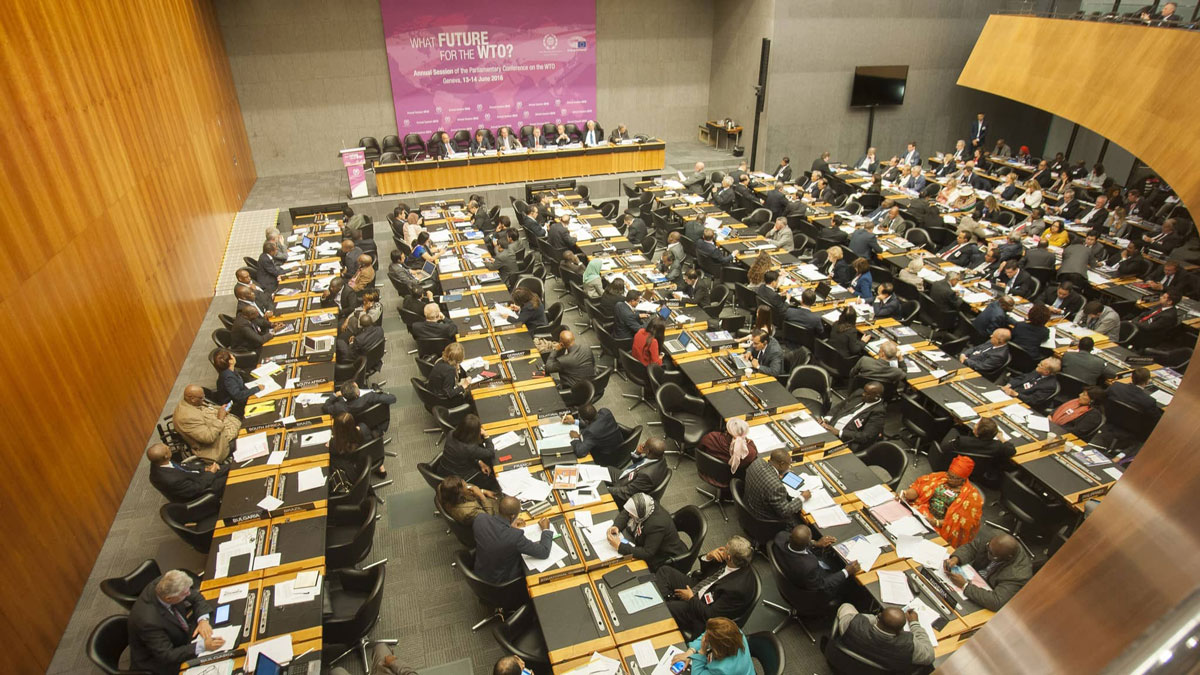Published 12 August 2025
As the WTO commemorates its 30th anniversary, its once fabled dispute settlement system lies crippled. Absent a functioning dispute settlement system, existing global trade rules cannot be enforced, and members will be reluctant to negotiate new rules with no possibility of enforcing them in the future. How did we get here? And how much of a reality check would the WTO need to reform the system?
It was considered the crowning achievement of the eight years of arduous negotiations that resulted in the most far-reaching international trade agreement in history. But this year, as the WTO commemorates its 30th anniversary, its once fabled dispute settlement system lies crippled, unable to rule definitively on commercial disputes.
The establishment of the two-tiered dispute settlement system (an initial ruling rendered by a three-person panel and an Appellate Body, or AB) meant that for the first time an international trade panel would issue verdicts that were binding. Should the losing party fail to bring its non-compliant practices in line with WTO rules, the victorious party would be given the green light to retaliate.
No one doubts the previous mechanism was broken and the vast majority of members want it to be fixed. But this has proven a tall order. Resolute US opposition is the major factor dimming the prospects for reform, but there are other explanations for the breakdown of the system. Most are linked to fundamentally different and seemingly irreconcilable interpretations of international law, national sovereignty and security, and legal precedent.
How did we get here?
Beginning in 2017, the United States started to systematically block the appointment of jurists to the AB, an action which has hobbled the settlement of disputes. Under the Dispute Settlement Understanding (DSU) agreement, parties to a dispute are guaranteed the right of appeal. No dispute involving an appeal can be finalized until the membership, through the Dispute Settlement Body (DSB), adopts the AB report. Absent the possibility of filing an appeal, WTO members that lose a case can conveniently appeal into the void freezing the case. Since the AB shut down in 2019, this has happened 22 times.
At the 23 June 2025 meeting of the DSB, the United States blocked – for the 88th time – an attempt by 130 WTO members to restart the process of selecting AB judicial appointees. No delegation left that meeting with the expectation that serious negotiations on reform would commence any time soon. The solution is years away – and everyone in Geneva knows it.
Nothing new here for the United States
Dissenting from the rest of the world is old hat for the United States. In 1919, the Senate voted against joining the League of Nations, even though President Woodrow Wilson was the driving international force behind its establishment.
Such was the Senate opposition to the Havana Charter establishing the International Trade Organization (ITO) that in 1950, President Harry Truman opted not to submit it to the Upper House of Congress for ratification. Senators’ concerns on the ITO were largely based on fears that US sovereignty would be undermined, an argument that would surface on Capitol Hill again and again in the decades to follow.
US reluctance to cede sovereignty to the ITO was not unusual. The United States is also not a member of the International Criminal Court, nor is it party to the United Nations Convention on Biological Diversity, the only UN member that didn’t join this convention. The United States has ratified only two or the eight International Labour Organization core conventions.
So it should come as little surprise that the United States is not party to the 1969 Vienna Convention on the Law of Treaties, a document most international trade lawyers believe underpins the WTO agreements and those of all other international organizations. The United States signed the Vienna Convention on the Law of Treaties in 1970, but it was never ratified by the Senate, and the United States is not bound by the treaty’s terms.
The EU is not a party to the Vienna Convention either but case law in the European Court of Justice refers regularly to it and in a submission to the UN International Law Commission, the EU stated the “convention reflects the rules of customary international law, which, as such, are binding upon the EU institutions and form part of the legal order of the European Union.”
The stark differences in legal interpretations on either side of the Atlantic are underscored by the fact that the EU adheres to a treaty which it never signed or ratified, while the US does not. For Europeans, the notion that an established institutional legal structure should hold sway over trade law is a matter of common sense. But for Americans, it harkens to an unaccountable world order in which unelected bureaucrats ride roughshod over US laws in the name of global legal harmony.
US blockage
Long before officials in the first Trump administration brought the AB to its knees, serious concerns had emerged in Washington. As far back as 2002, in the George W. Bush administration, US officials and members of Congress were expressing concerns that the AB had exceeded its remit. Three cases stood out in particular.
First, the AB’s practice of issuing “advisory opinions” bounds future panels to the jurisprudence established by the AB unless there were “cogent reasons” to change legal course. These precedents paved the way for US setbacks in numerous cases pertaining to its “zeroing” methodology of determining dumping margins. Defenders of the AB said the principle of advisory opinions was fully in line with the DSU by providing “security and predictability.” But the Americans disagreed.
“Through the issuance of advisory opinions, the Appellate Body has attempted to produce interpretations or “make law” in the abstract … Neither the United States nor any other WTO Member has agreed to allow the Appellate Body to resolve abstract questions or make law,” USTR said in its 2020 report.
At the same time, the AB’s definition of the term “public body” severely undercut US confidence in the WTO as a venue for resolving disputes with China.
Under the WTO Agreement on Subsidies and Countervailing Measures, a subsidy is deemed to have been extended if “there is a financial contribution by a government or any public body within the territory of a Member.” The United States argued that the provision of inputs including steel, rubber, and petrochemicals by state-owned enterprises and the extensions of loans by state-owned banks constituted subsidies to Chinese manufacturers which received them.
But the AB ruled that for an entity to be classified as a public body, it needed “to possess, exercise or be vested with government authority”, a narrow definition which severely hampered the ability of governments to bring cases involving Chinese state-owned enterprises.
According to USTR this interpretation means that “even where a government owns or controls an entity, it would not be sufficient to hold the government responsible for any injurious subsidies it provides.” This interpretation was used in many subsequent subsidy cases including those involving South Korean shipbuilding and EU aircraft manufacturing.
Furthermore, in a 2001 case brought by Australia challenging a US safeguard, a time-limited measure in which the importing country raises tariffs on imports of specific products when surges of those imports cause serious injury to domestic producers, the AB ruled that prior to implementing the safeguard measure, the importing member must “publicly demonstrate unforeseen developments as a matter of fact” and “that the demonstration must have appeared in the report of the competent authorities.” Neither requirement is mentioned in the WTO safeguard agreement nor in its predecessor Article XIX of GATT.
Alan Sykes, who teaches law at Stanford University and is an expert on WTO dispute settlement, said the AB had “failed to articulate any coherent doctrine as to when safeguard measures are allowable … (and) they make it increasingly difficult for WTO members to employ safeguard measures at all.” USTR agreed, claiming that all but one of the safeguard measures challenged in WTO were subsequently deemed to violate WTO rules which led members to simply cease using this policy tool.
Can it be fixed?
The most concrete reform step taken so far is the creation by a group of 30 WTO members of the Multi-Party Interim Appeal Arbitration Arrangement (MPIA). Formed in April 2020, the MPIA is based on Article 25 of the DSU, which spells out clearly and concisely how arbitration can be handled.
To this point, processes through the MPIA have resulted in three arbitration awards, the most recent involving the EU and China relating to Beijing’s protection of intellectual property. A 2022 case was brought by Belgium, Germany, and the Netherlands against Colombia for the latter’s anti-dumping duties on frozen fries. A third case, also in 2022, was brought by the EU against Turkey for violating WTO agreements pertaining to the production of pharmaceuticals.
The MPIA has its advantages: its rules and processes are less cumbersome than those of the AB. It issues its reports on time and its reports are far more concise than AB reports. One other notable difference is the relatively light touch of the WTO Secretariat in MPIA cases. There is none of the “guidance” that had been provided by the AB Secretariat.
The MPIA has been relatively successful but even its supporters recognize its shortcomings. The MPIA has taken on only a handful of appeals and of the three rulings one has not been implemented to the satisfaction of the complainant. Several big players including the United States and India have not enlisted. Moreover, the system is not automatic, members use it voluntarily and on a case-by-case basis. As such, MPIA rulings carry less weight than those issued by the AB. It is an interim solution to a seemingly intractable problem.
What else is new?
Any deliberation on improving dispute resolution must start with a recognition of what went wrong. Some suggested doing away with the second tier altogether, while some believe a system like GATT, which would be less binding, should be considered.
Some take a more draconian view. Since more than 160 WTO members accept the need for reform but insist on a two-tier process, perhaps the most logical approach, is to proceed absent the US. But this is unlikely to happen. Even the Trump administration understands that to leave the WTO would put the country at a profound commercial disadvantage, particularly when it comes to trade in services – where the United States boasts a US$293 billion surplus – and in the protection of intellectual property. Such a step would also leave the multilateral trading field wide open for China.
At the moment, no serious engagement on dispute settlement reform is taking place. No one expects a breakthrough before or during the March 2026 WTO ministerial meeting in Cameroon. In the absence of easy and even not-so-easy answers, the most likely short- and medium-term outcome for reform is that some WTO members will continue to muddle along with the interim mechanisms they cobbled together while the US continues to thumb its nose at global trade rules.
© The Hinrich Foundation. See our website Terms and conditions for our copyright and reprint policy. All statements of fact and the views, conclusions and recommendations expressed in this publication are the sole responsibility of the author(s).







